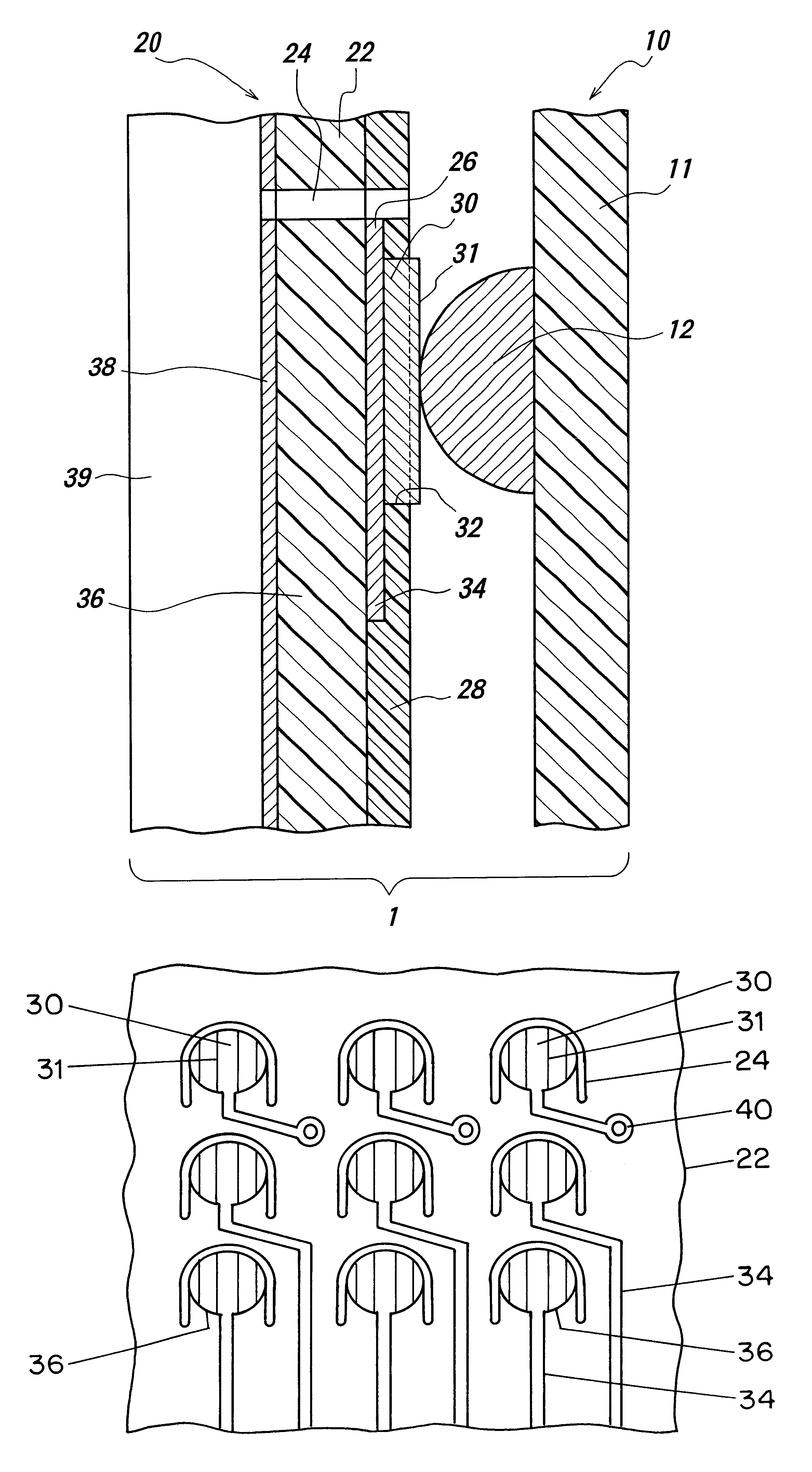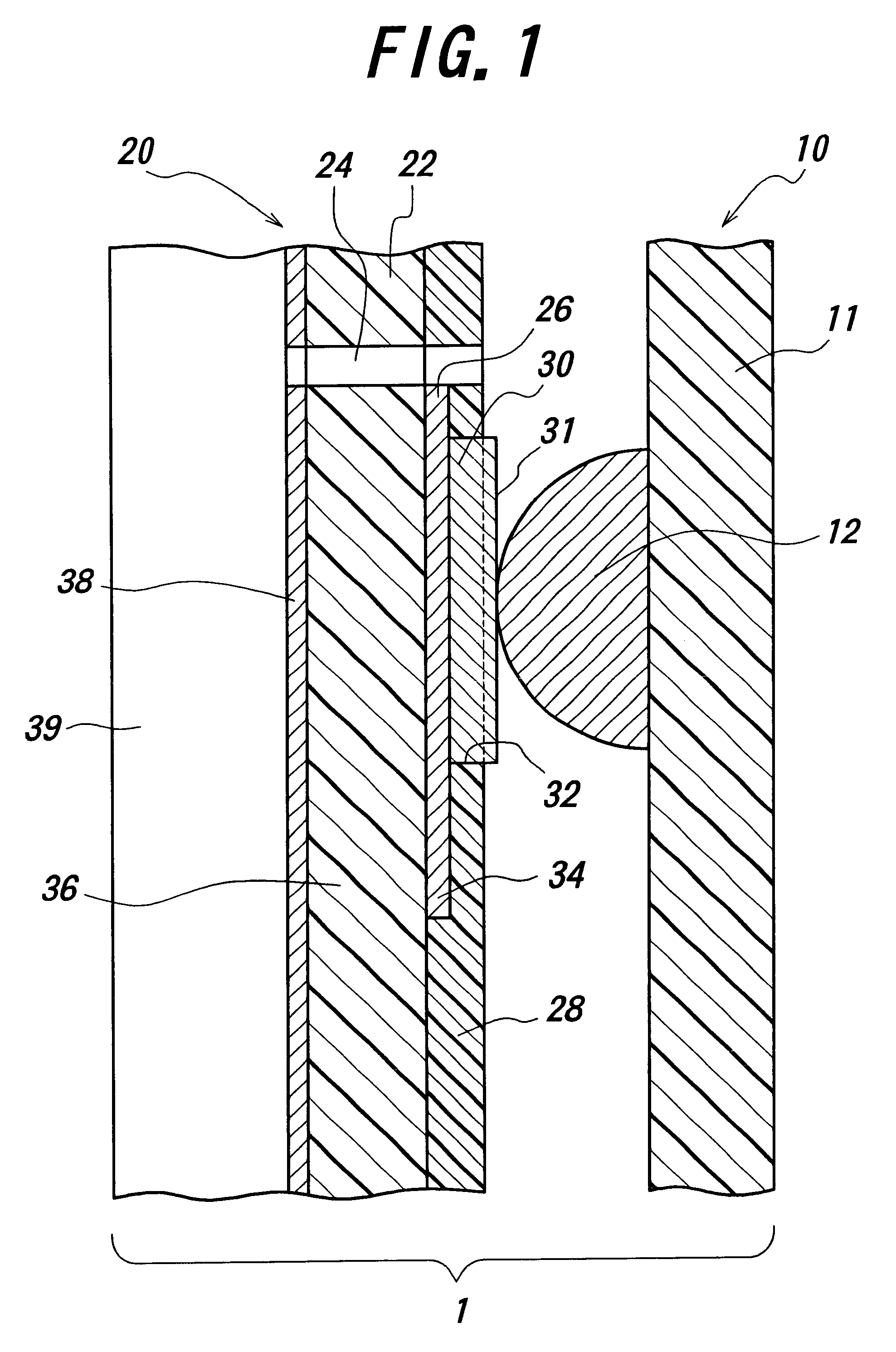Electrical connectors adapted to reduce or prevent adherence of conductive material to contact portions as the connector
a technology of conductive material and connector, applied in the field of electric connector, can solve the problems of increasing the man-hour of operation, increasing the cost of operation, and and achieve the effect of reducing the adhesion of solder or oxide impurities
- Summary
- Abstract
- Description
- Claims
- Application Information
AI Technical Summary
Benefits of technology
Problems solved by technology
Method used
Image
Examples
Embodiment Construction
FIGS. 1 to 4 illustrate one preferred embodiment of the electrical connector 1 according to the invention. In the drawings, a first connector 10 includes a connector plate 11 made of a ceramic or hard resin substrate or board having a rigidity as in a conventional connector plate, and a plurality of electric contacts 12 of solder or the like in the form of hemispherical protrusions provided on one surface of the connector plate 11. A second connector 20 includes a connector plate or board 22 made of a soft resin or the like having an appropriate rigidity, a plurality of electric conductors 26 of disc-shaped metal layers on one surface of the board 22 facing to the electric contacts 12 of the first connector 10, a protection covering layer 28 of an insulating material provided on the board 22 on the same side as the electric conductors 26, a plurality of electric contact elements 30 provided on the electric conductors 26, and protrusions or ridges 31 in the form of a mountain range p...
PUM
| Property | Measurement | Unit |
|---|---|---|
| height | aaaaa | aaaaa |
| elastic | aaaaa | aaaaa |
| conductive | aaaaa | aaaaa |
Abstract
Description
Claims
Application Information
 Login to View More
Login to View More - R&D
- Intellectual Property
- Life Sciences
- Materials
- Tech Scout
- Unparalleled Data Quality
- Higher Quality Content
- 60% Fewer Hallucinations
Browse by: Latest US Patents, China's latest patents, Technical Efficacy Thesaurus, Application Domain, Technology Topic, Popular Technical Reports.
© 2025 PatSnap. All rights reserved.Legal|Privacy policy|Modern Slavery Act Transparency Statement|Sitemap|About US| Contact US: help@patsnap.com



